The Australian Bureau of Statistics (ABS) recently released its quarterly labour force report, which breaks-down employment at the industry level to August 2018.
Below are some key charts, which present the changes in employment aggregates on a trend basis.
First, the quarterly change in employment by industry:
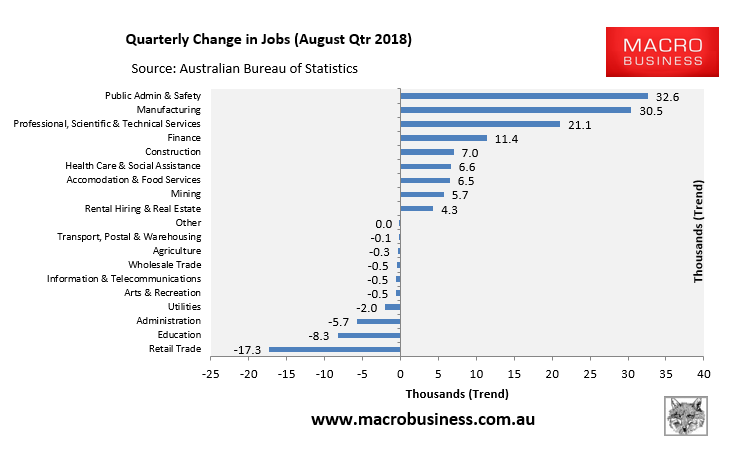
As you can see, Public Administration & Safety (+32,600), Manufacturing (+30,500), and Professional, Scientific & Technical Services (+21,100) were the biggest employment gainers over the August quarter, whereas Retail Trade (-17,300) and Education (-8,300) were the two biggest losers.
Next, the annual employment change:
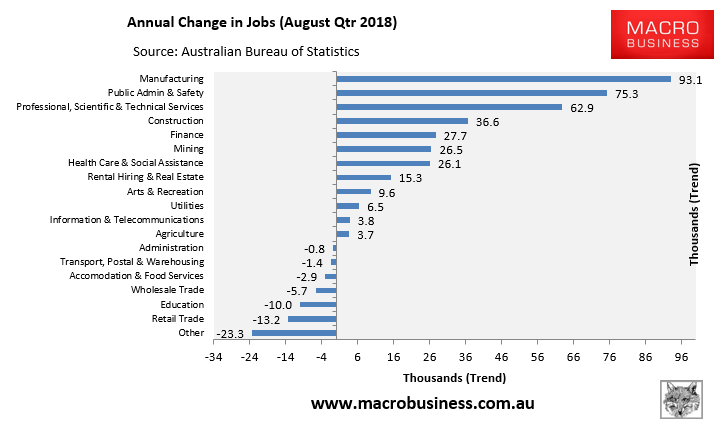
Here, Manufacturing (+93,100), Public Administration & Safety (+75,300), and Professional, Scientific & Technical Services (+62,900) were the biggest employment gainers over the year to August, whereas Other (-23,300) and Retail (-13,200) were the two biggest losers.
The below chart, which tracks employment changes in the decade since the GFC (August 2008), shows how the structure of the labour market has changed:
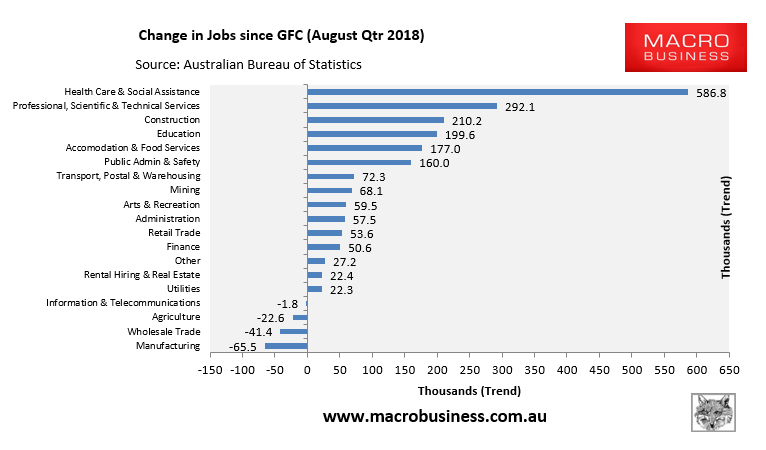
As you can see, Health Care & Social Assistance (+586,800), Professional, Scientific and Technical Services (+292,100), Construction (+210,200), and Education (199,600) have been the big gainers, whereas manufacturing (-65,500), Wholesale Trade (-41,400) and Agriculture (-22,600) have been the biggest losers. That’s three of the four major job generators of the past decade being government-related (i.e. health care, construction via infrastructure, and education).
The below charts show the gain in employment over time, with each recording strong increases in employment shares over the past decade:
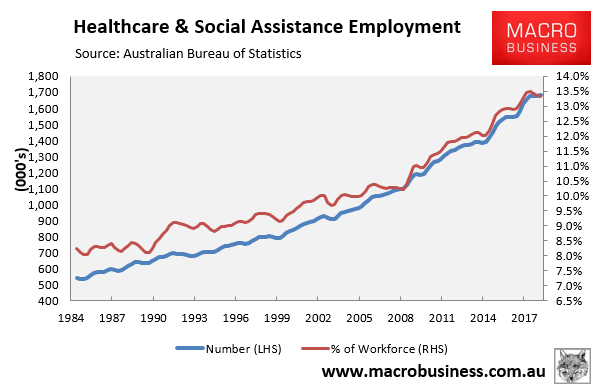
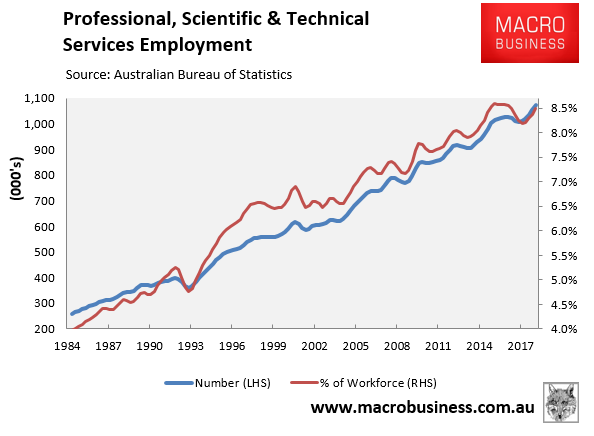
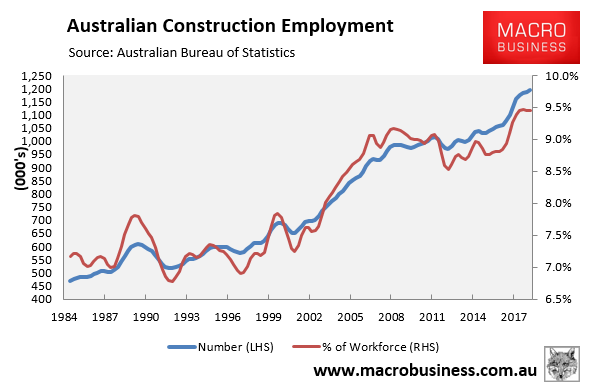
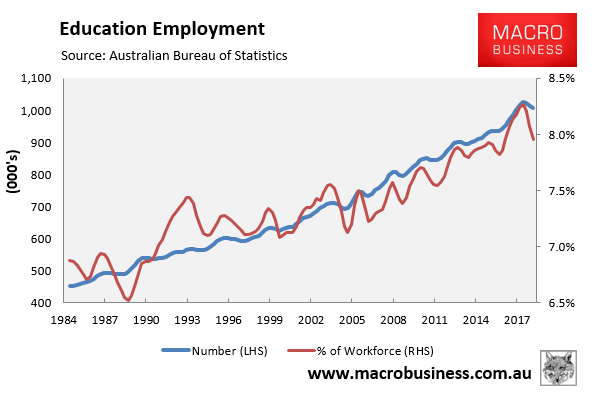
By contrast, manufacturing’s employment share has fallen sharply over recent decades, but has at least recorded a strong rebound over the past year:
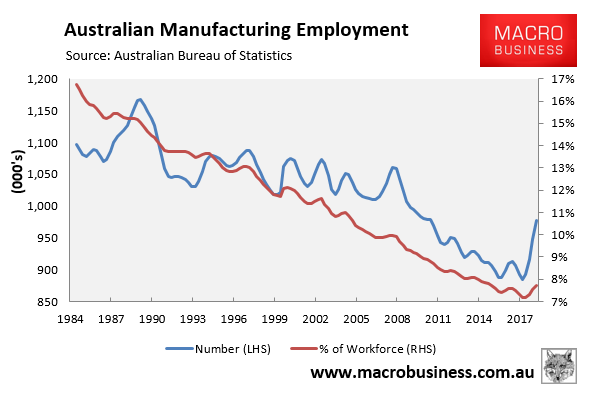
This is the ‘Botox Boom’ described by Houses & Holes last year:
We’ve lived the housing and mining booms. They’re over. Now it’s time for the Botox Boom.
Yes, Australia is getting work done and it’s beginning to show. The recent run of economic data has unmistakably improved, from commodity prices, through the labour market and onto business investment.
However, there is one difference between the Botox Boom and those that came before. It is by and large fake, produced by force-feeding mass immigration and government spending into broken economic structure. It is thus a profitless boom, as the crucial underpinnings to boost income for both capital and labour are missing…
The above jobs data shows all the hallmarks of the Botox Boom.
We’ve got booming ‘caring’ jobs in health care & social assistance and education, not to mention public sector jobs. These types of services jobs being created are more about shifting wealth around the economy, rather than creating new wealth, with much of this recent employment growth driven by the NDIS. That is, they typically exhibit low productivity, low wages, are non-tradable, and are paid for to a large extent via taxation.
Then there is the population-led construction jobs boom that is being driven by strong apartment construction as well as public infrastructure investment.
Such building-led growth is ponzi growth, since it requires more people, asset sales and debt to fund it. Moreover, if Australia doesn’t build more than last year, then the economy shrinks (i.e. it’s the rate of change that matters not the absolute level).
By contrast, those trade-exposed sectors that truly create wealth in the economy are under pressure. Accordingly, private sector wages growth is stuck at just 1.9% and households are drawing down their savings to maintain consumption:
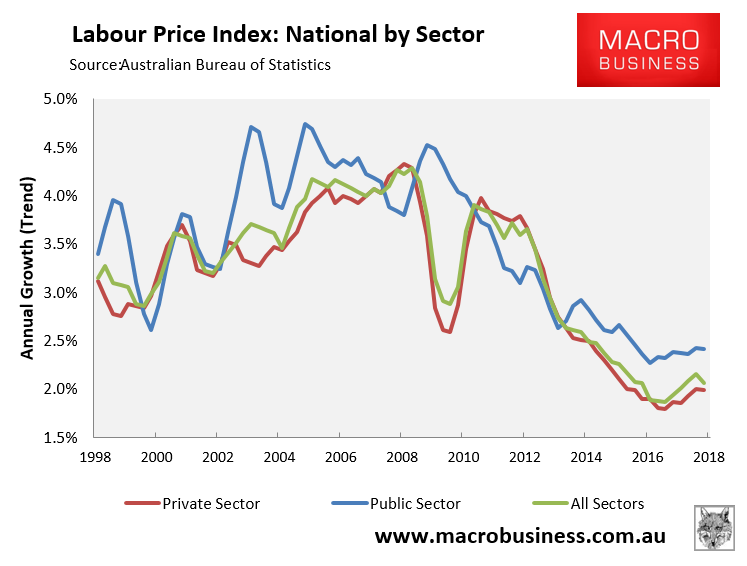
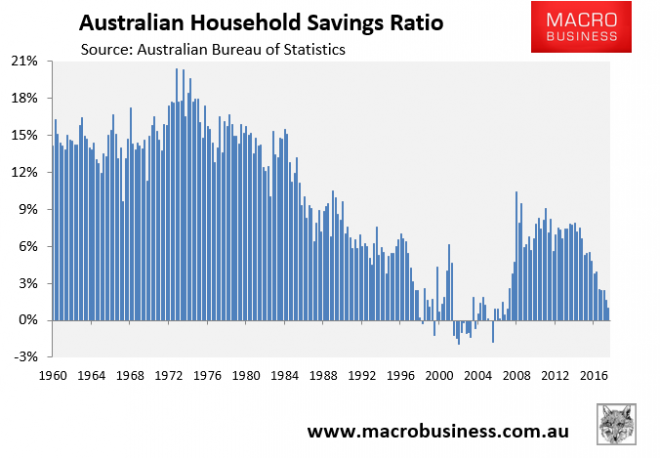
Basically, the economy’s growth levers are not operating properly, too reliant on extra people, asset sales and debt.

